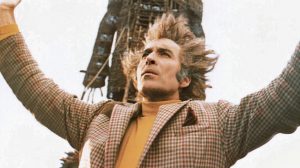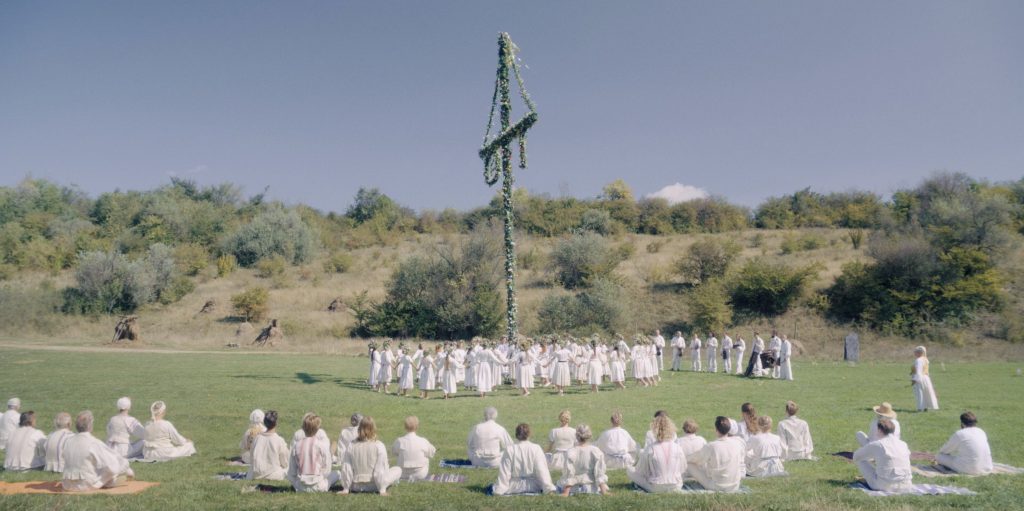A friend and I recently spent a dateless October evening debating whether the 1979 film “Alien” should be classified as science fiction or horror. My friend concluded that “Alien” was the former because while that genre looks to the future, horror concerns itself with the past.
That argument convinced me. After all, aren’t the villains of horror films archaic vampires and ghosts in crumbling estates, or killers returning to town to echo the crimes they committed 20 years ago tonight? The monster never attacks from the front, but from behind.
This characteristic is magnified in the subgenre of what’s known as “Folk Horror,” which can be safely described as horror of the past itself. While varied as any genre, there are some general consistencies throughout: A Folk Horror film is set in a rural locale, its geographic isolation mimicking its moral seclusion from modern life. In it you will likely find cairns, runes, misshapen villagers, fog rolling over the misty moors, moss-strewn cobblestones, and the inevitable maiden wearing a thin white robe in cold weather.
(The category shares similarities to Hallmark movies in that it usually features a big-city outsider visiting a small town and never leaving, although here that decision is usually involuntary and with a bit more blood sacrifice.)
Kier-La Janisse’s recent documentary, “Woodlands Dark and Days Bewitched: A History of Folk Horror,” is a comprehensive, even exhaustive, primer on the subject. She provides a veritable syllabus of film clips, from classics such as “The Blood on Satan’s Claw” and “Children of the Corn” to more recent releases like “The Witch.”
She has assembled an impressive parade of academics on the subject and seemingly every pierced nose from either side of the Atlantic. But while these experts deliberate and dissect every possible “-ism” known to man (feminism, colonialism, and classicism get particular attention,) they neglect to examine the genre’s most intriguing feature: its inseparability with Christianity.
A common denominator in these films is the threat invariably coming from a pre-Christian deity or cult. Folk horror is unique among horror, or indeed any genre, in remaining cleareyed on the realities of paganism. With the buffer of years, this brand of paganism usually represents little more than harmless tree worship, Greenpeace with the promise of an afterlife.
When we think of the old gods now, our minds are likely to drift to Chris Hemsworth, or perhaps to pottery shop covens who frolic naked in state parks. But in Folk Horror, we are brought nose to nose with the actual rituals, unable to avert our gaze.
For usurping paganism, Christianity is often labeled a genocidal colonizer, or worse yet a party pooper. But when rights we once presumed to be innate are yanked away, we realize how much we are indebted to the Christian tradition. For all the Church’s historical faults over the centuries, it has at least had the decency to keep our organs inside our body. There are rarely winners in a Folk Horror film, but Christianity doesn’t lose. It may not be the hero as in exorcist films, but it at least gets the dignity of not being the villain for once.
2019’s “Midsommar” is the most recent and perhaps familiar example. The story follows a group of American graduate students who attend a midsummer festival in rural Sweden. The villagers still follow the pagan rites and rituals, much to the fascination of the young tourists. But as the rituals grow increasingly gruesome, their academic detachment gives in to denial.
They want to remain mature anthropologists, blessing the proceedings with a cultural and moral relativism and more than a hint of arrogance. They realize too late that the villagers don’t hold them with the same remove. Opting out simply isn’t an option, and by refusing to make a judgment, they expose themselves to a more proactive spirituality.
But the platonic ideal of Folk Horror’s Christian sympathies is 1973’s “The Wicker Man,” in which a puritanical Christian police officer is sent to a remote Scottish island to investigate the disappearance of a little girl. There he finds that the islanders have returned to Celtic but mostly harmless practices, like maypoles and free love.

Our hero chafes against these hippies, and we in turn chafe against his prudish rudeness. The film exploits our natural distaste against this sort of stick-in-the-mud, the type of school-board scold who would try to ban Harry Potter and unchaste hand-holding.
But as we settle into our prejudices, some doubts naggingly linger. Why are the villagers so cheerfully noncooperative? Why do they deny the missing girl even existed, when evidence abounds that she did? The questions keep piling up until our hero’s narrowmindedness calcifies into backbone.
The most fascinating character of all is Lord Summerisle (played by the legendary late British actor Christopher Lee) the leader of this little hamlet. While the villagers are true believers, Summerisle remains a participating skeptic. He openly acknowledges that his grandfather coupled a pagan revival to his modern farming techniques to ensure a blissful and docile workforce. His grandson sees no reason to buck tradition.
But it’s hardly tradition when it’s so patently manufactured. The rituals of the island are of questionable veracity, just transcribed from books and other popular conceptions of paganism. What the islanders practice is not pagan belief, but rather the notion of paganism filtered through modernity.
Whatever evils inflicted by the cult can’t be blamed on Celtic culture, but on those wicked desires the modern mind thinks paganism permits. To borrow parlance from a different horror genre, the call is coming from inside the house.
William Faulkner once said that the past is never dead, it’s not even past. Folk Horror reminds us that true terror lies not in the bad old days returning, but that those bad old impulses never left at all.

